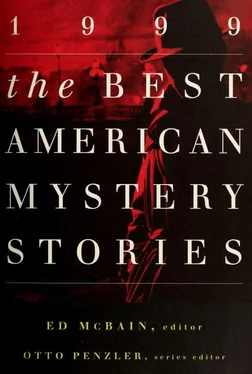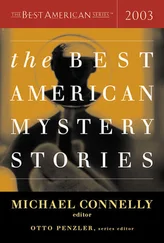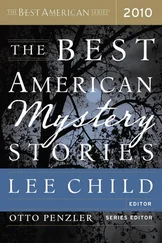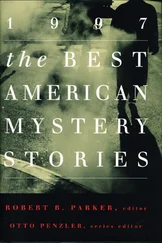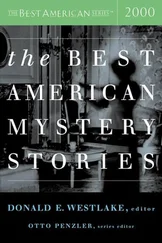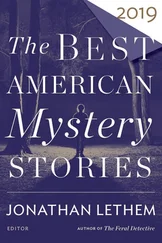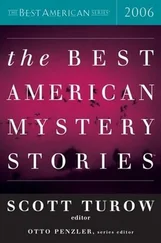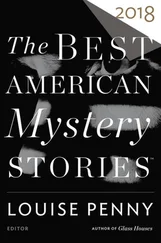He turned quickly away and took a breath, pressing one of his hands against his stomach.
Mutt and Jeff laughed at him as they walked into the house.
Pete Cooper shook his head and dismissed Russell with a wave of his hand.
The ghosts of the Leonard family surrounded Russell on the porch, Irv placing a reassuring hand on the boy’s shoulder while Miriam stroked his hair and the children looked on in silence.
Tanya Claymore’s cameraman caught Russell’s expression on tape.
It wasn’t until Jackson Davies came up and took hold of his hand that Russell snapped out of his fugue and, without saying a word, got to the job.
And all along Merchant Street, shadowy forms in their housecoats and slippers watched from the safety of front porches.
Even more famous than Francis Paymer’s phone call is Tanya Claymore’s videotape of that night. It ran four and a half minutes and was the featured story on Channel g’s six o’clock news broadcast the following evening. Viewer response was so overwhelming that the tape was broadcast again at 7:00 and 11:00 P.M., then at 6:00 A.M. and noon the next day, then again, reedited to two minutes, forty-five seconds, at 7:00 and 11:00 P.M.
It is an extraordinary piece of work, and I showed it to my students that day. I eventually received an official reprimand from the school board for doing it — several of the students had nightmares about it, compounding those about the Utica killings — but I thought they needed to see and hear other people, strangers, express what they themselves were feeling.
The ghosts wanted to see it again, as well.
As did I — and why not? In a way, it is not so much about the aftermath of a tragedy as it is a chronicle of my birth, a point of reference on the map of my life: This is where I really began.
The tape opens with a shot of the Leonard house, bathed in shadow. Dim figures can be seen moving around its front porch. Sounds of footsteps. A muffled voice. A door being opened. A light coming on. Then another. And another.
Silhouettes appear in an upstairs window. Unmoving.
The camera pulls back slightly. Seen from the street, the lights from the house form a pattern of sorts as they slip out from the cracks in the particleboard over the downstairs windows.
It takes a moment, but suddenly the house looks like it’s smiling. And it is not a pleasant smile.
All of this takes perhaps five seconds. Then Tanya Claymore’s voice chimes softly in as she introduces herself and says, “I’m standing outside the house of Irving and Miriam Leonard at One-eighty-two Merchant Street, where, as you know, four nights ago their son Andy began a rampage that would leave over thirty people dead and over thirty more wounded.”
At that very moment, someone inside the house kicks against the sheet of particleboard over the front bay window and wrenches it loose while a figure on the porch uses the claw end of a hammer to pull it free. The board comes away, and a massive beam of light explodes outward, momentarily filling the screen.
The camera smoothly shifts its angle to deflect the light. As it does so, Tanya Claymore resolves into focus like a ghost on the right side of the screen. Whether it was purposefully done this way or not, the effect is an eerie one.
She says, “Just a few moments ago, accompanied by two members of the Cedar Hill Police Department, a team of janitors entered the Leonard house to begin what will most certainly be one of the grimmest and most painful cleanups in recent memory.”
She begins walking up toward the front porch, and the camera follows her. “Experts tell us that violence never really ends, no more than a symphony ceases to exist once the orchestra has stopped playing.”
As she gets closer to the front door, the camera moves left while she moves to the right and says, “And like the musical resonances that linger in the mind after a symphony, the ugliness of violence remains.”
By now she has stepped out of camera range, and the dark, massive bloodstain on the foyer wall can be clearly seen.
At the opposite end of the foyer, a mop head drenched in foamy soap suds can be seen slapping against the floor. It makes a wet, sickening sound. The camera slowly zooms in on the mop and focuses on the blood that is mixed in with the suds.
The picture cuts to a well-framed shot of Tanya’s head and shoulders. It’s clear she’s in a different room, but which room it might be is hard to tell. When she speaks, her voice sounds slightly hollow and her words echo.
“This is the only time that a news camera will be allowed to photograph the interior of the Leonard house. You’re about to see the kitchen where Miriam Leonard and her two daughters, Jessica Hamilton and Elizabeth Shannon, spent the last few seconds of their lives, and where seven-year-old Randy Hamilton, with two bullets in his small body, fought to save the life of his infant brother, Joseph.
“The janitors have not been in here yet, so you will be seeing the kitchen just as it was when investigators finished with it.”
For a moment, it looks as if she might say something else, then she lowers her gaze and steps to the left as the camera moves slightly to the right and the kitchen is revealed.
The sight is numbing.
The kitchen is a slaughterhouse. The contrast between the blood and the off-white walls lunges out at the viewer like a snarling beast escaping from its cage.
The camera pans down to the floor and follows a single splash pattern that quickly grows denser and wider. Smeary heel- and footprints can be seen. The camera moves upward: part of a handprint in the center of a lower counter door. The camera moves farther up: the mark of four bloody fingers on the edge of the sink. The camera moves over the top of the sink in a smooth, sweeping motion and stares at a thick, crusty black whirlpool twisting down into the garbage disposal drain.
The camera suddenly jerks up and whips around, blurring everything for a moment, a dizzying effect, then comes to an abrupt halt. Tanya is standing in the doorway of the kitchen with her right arm thrust forward. In her hand is a plastic pistol.
“This is a rough approximation of the last thing Elizabeth Shannon saw before her youngest brother shot her to death.”
She remains still for a moment. Viewers cannot help but put themselves in Elizabeth’s place.
Tanya slowly lowers the pistol and says, “The question for which there seems to be no answer, is, naturally, ‘Why did he do it?’ ”
“We put that question to several of the Leonards’ neighbors this evening. Here’s what some of them had to say about seventeen-year-old Andy, a young man who now holds the hideous distinction of having murdered more people in a single sweep than any killer in this nation’s history.”
Jump-cut to a quick, complicated series of shots.
Shot 1: An overweight man with obviously dyed hair saying, “I hear they found a tumor in his brain.”
Insert shot: Merchant Street as it looked right after the shootings, clogged with police cruisers and ambulances and barricades to keep the growing crowd at bay.
Shot 2: A middle-aged woman with curlers in her hair saying, “I’ll bet you anything it was his father’s fault, him bein’ a gun lover and all. I heard he beat on Andy a lot.”
Insert shot: Lights from a police car rhythmically moving over a sheet-covered body on the front lawn.
Shot 3: An elderly gentleman in a worn and faded smoking jacket saying, “I read there were all these filthy porno magazines and videotapes stashed under his mattress, movies of women having relations with animals and pictures of babies in these leather sex getups...”
Читать дальше
